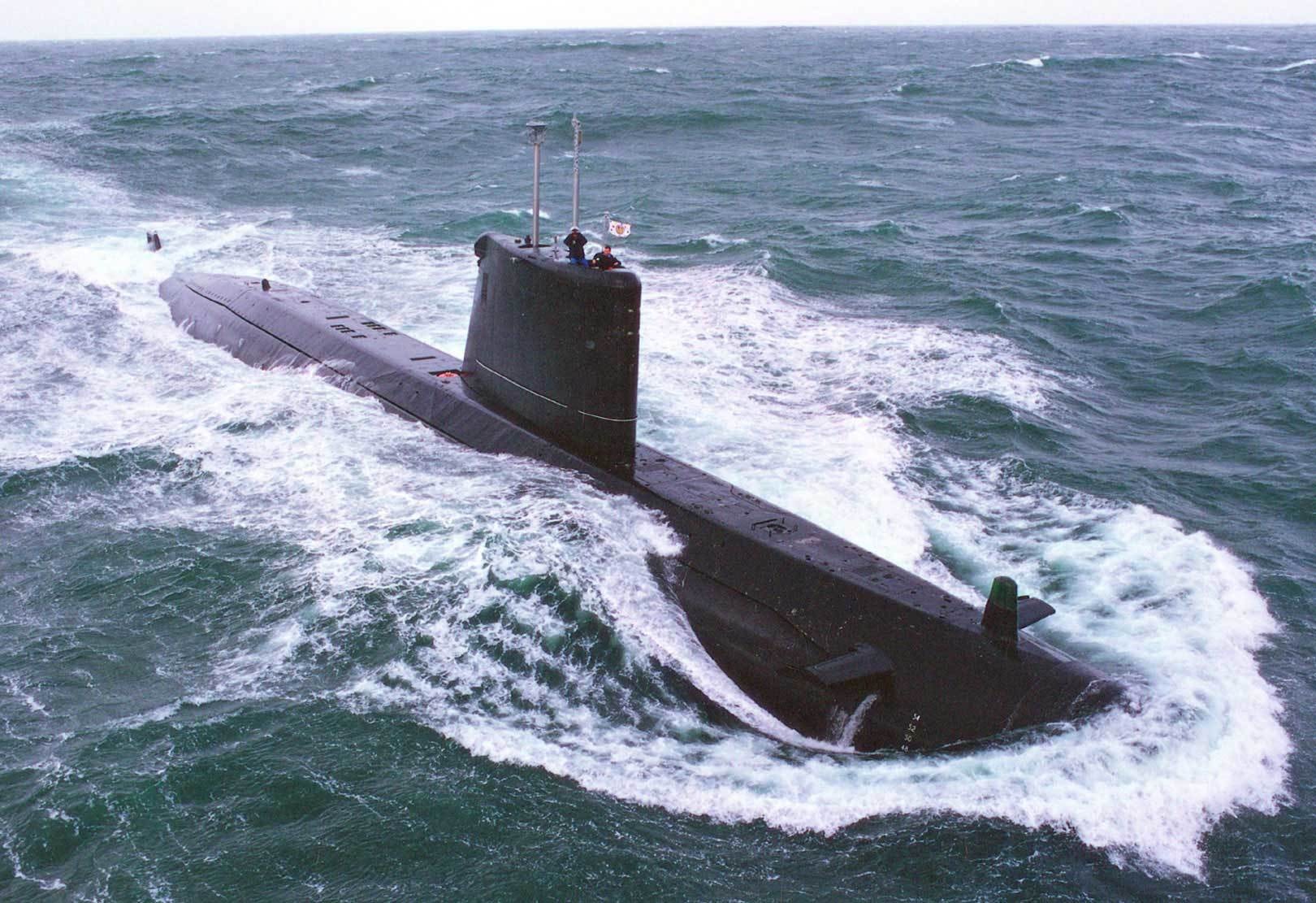Pakistan's tool of war: Agosta 90B, our submarine in the deep
The backbone of Pakistan's current submarine fleet is the French-made Agosta 90B submarine. — Photo courtesy Pakistan Navy
Pakistan Navy’s sub-surface fleet was established in 1964 and since then it has performed the role assigned to it in an admirable manner. It also has the distinct honour of scoring the first kill (INS Khukri) from a submarine after the end of the Second World War.
The backbone of the current submarine fleet is the French-made Agosta 90B submarine — a diesel-electric submarine (SSK) — which is an improved version of the original Agosta 90, boasting higher performance and new combat systems.
Agosta 90B submarines, designed and manufactured by DCN (now DCNS) of France, are used by the Pakistani and Spanish Navy.
The French Navy, a former operator of the Agosta-class submarines, had grouped the Agosta-class as océanique, meaning "ocean-going."
The Agosta 90B has been designated the 'Khalid class' in Pakistani service.
Three Agosta 90Bs were ordered in 1994, with the first constructed and assembled in France, while the second and third ones were assembled in Pakistan.
DCNS also gave Pakistan the licence to offer commercial production of the submarines to potential customers.
The Agosta 90b — Photo courtesy: DCN
Agostas in the deep
The submarines used by the Pakistani Navy have a modern design, and various modifications to the original to give it a lower acoustic signature and improved battery performance.
Pakistani Agostas can dive to a depth of 350 metres, more than the earlier model of the submarine.
By 2011, Pakistan had retrofitted its Agosta submarines with MESMA (Module d'EnergieSous-Marin Autonome) air-independent propulsion (AIP) system. An AIP propulsion system uses liquid (or compressed) oxygen or hydrogen fuel cells, thereby allowing submarines to stay submerged for longer periods without the need for external sources of oxygen. This increased endurance also increases a submarine’s survivability, while enabling the submarine to remain submerged three times longer.
Read: Pakistan's tool of war: Why the Mi-35 Hind-E is an excellent choice
The Agosta 90B submarines are equipped with Submarines tactical integrated combat system (SUBTICS) which processes signals from the various sensors aboard the submarine, and determines the tactical situation by track association, trajectory plotting and management, while at the same time handling all weapon command and control functions.
The increased automation in the much improved Agosta 90B has made it possible to reduce the crew to 36 sailors and officers.
Silent hunter
Submarines are inherently hunters; they prowl the deep waters while waiting and listening for their prey. The Agosta 90B is no different.
Armed with four bow 533mm torpedo tubes, the Agosta 90B is capable of launching torpedoes and Exocet SM39 missiles. The torpedoes carry a 250kg warhead, and can deliver their deadly payload to a range of 20 kilometres, at a maximum depth of 600 metres.
The famed Exocet anti-ship missile, on the other hand, skims the sea surface post launch, climbs into the sky when its near its unfortunate target and initiates a terminal dive once over the target. The missile is difficult to shoot down on its attack pattern, and delivers a hull-shattering 165kg warhead at a distance of 50km.
The submarine's sonar suite includes both bow mounted sonar and towed-sonar arrays, making it well suited to detect, plot and attack any surface or sub-surface targets.
- Photo courtesy: mmbiz.qpic.cn
Well suited for Pakistan
Being a diesel-electric submarine (SSK), the Agosta 90B is well suited for the needs of the Pakistan Navy. Not only is the submarine cost-effective, it also costs a lot less than a nuclear-powered submarine. While nuclear submarines are not harmful for the crew, the cost of disposing of spent nuclear fuel is much higher and increases the operating cost manifold.
AIP-equipped submarines are much stealthier as well, while nuclear submarines have measures to reduce acoustic and magnetic signatures. The nature of the propulsion used (nuclear) makes them noisier, and more susceptible to be picked up by a variety of acoustic, magnetic and thermal sensors.
Tactically, the Agosta 90B has a distinct advantage in littoral waters, where marine life and the busy shipping lanes originating out of the Strait of Hormuz can easily camouflage the acoustic signature of the submarine.
Protecting Pakistan’s sea lines of communications (SLOC) is a vital mission that the Agosta 90B performs, as commercial seaborne trade is the lifeline of the country’s economy.
Pakistan's tool of war: Agosta 90B, our submarine in the deep - Pakistan - DAWN.COM

















